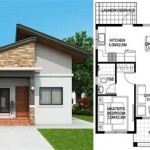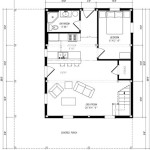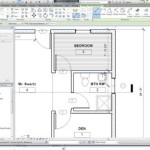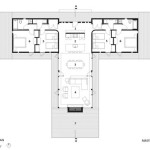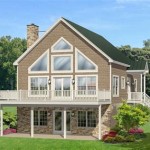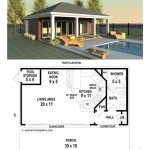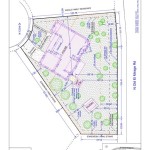Simple Kitchen Floor Plan With Dimensions In Cms Format
Designing a kitchen, whether for a new build or a renovation project, requires meticulous planning and careful consideration of dimensions. A simple kitchen floor plan, with clear and accurate dimensions in centimeters (cms), is an essential tool for visualizing the space, planning the layout, and ensuring that all elements fit comfortably and functionally. This article provides a comprehensive guide to understanding and creating a simple kitchen floor plan with dimensions in cms, covering key considerations, common layouts, and essential measurements.
Kitchen design is not solely about aesthetics; it is fundamentally about functionality. The goal is to create a space that is efficient, safe, and enjoyable to use. A well-designed kitchen minimizes unnecessary movement, provides ample storage, and facilitates easy food preparation. Accurate dimensions are crucial for achieving this, as they dictate the placement of appliances, cabinets, countertops, and walkways. Using centimeters as the unit of measurement offers a precise level of detail, particularly important in smaller kitchens where space is at a premium.
Before embarking on the process of creating a kitchen floor plan, it is essential to gather the necessary tools and information. This includes a measuring tape, graph paper (or CAD software), a pencil, and an eraser. It is also critical to accurately measure the existing kitchen space, noting the location of walls, doors, windows, plumbing, and electrical outlets. These existing features will significantly influence the design and layout of the new kitchen.
Key Considerations for a Kitchen Floor Plan
Several key considerations must be taken into account when developing a simple kitchen floor plan. These considerations are fundamental to creating a functional and aesthetically pleasing space.
Firstly, the work triangle is a classic design principle that connects the three primary work areas in a kitchen: the sink, the refrigerator, and the cooktop (or oven). The distances between these points should be optimized to minimize unnecessary steps and create an efficient workflow. Ideally, the sum of the three sides of the triangle should be between 400 cms and 790 cms. Too small, and the kitchen feels cramped; too large, and it becomes inefficient.
Secondly, adequate walkways and circulation spaces are essential. A minimum walkway width of 90 cms is recommended to allow one person to move freely. For two people to comfortably pass each other, a walkway width of at least 120 cms is preferable. These measurements should be considered when placing islands or peninsulas in the kitchen.
Thirdly, storage is a critical component of kitchen design. Efficient and accessible storage solutions are essential for keeping the kitchen organized and clutter-free. Cabinets should be planned with consideration for the items they will store, and dimensions should be carefully calculated to maximize space utilization. Consider incorporating a mix of base cabinets, wall cabinets, and pantry storage to accommodate various needs.
Fourthly, countertop space is vital for food preparation and other kitchen activities. Plan for adequate countertop areas on either side of the sink and cooktop. A minimum countertop depth of 60 cms is generally recommended, though deeper countertops (70-80 cms) can provide more workspace. The height of the countertop should also be considered, typically around 90 cms for standard height, but adjustable for individuals with differing needs.
Fifthly, appliance placement is crucial for both functionality and safety. Ensure adequate space around appliances for easy access and operation. Refrigerators need adequate door swing clearance, and cooktops should have sufficient ventilation to remove fumes and odors. Ovens should be placed at a comfortable height to avoid bending or straining when lifting heavy dishes.
Common Kitchen Layouts and Dimensions
Several common kitchen layouts can be adapted to suit different space configurations and user preferences. These layouts offer varying levels of efficiency and functionality, and understanding their characteristics is essential for creating an effective kitchen floor plan.
The one-wall kitchen is a space-saving design suitable for small apartments or studios. All appliances, cabinets, and countertops are arranged along a single wall. The typical length of a one-wall kitchen ranges from 240 cms to 360 cms, depending on the number of appliances and storage units. A minimum depth of 60 cms is required for countertops and base cabinets. Walkways in front of the one-wall kitchen should be at least 90 cms wide.
The galley kitchen features two parallel runs of cabinets and countertops, creating a narrow passageway in between. This layout is efficient for cooking, as everything is within easy reach. The width of the galley kitchen should be between 180 cms and 240 cms to allow for comfortable movement. Each run of cabinets and countertops typically has a depth of 60 cms, leaving a walkway of 60 to 120 cms. The length of the galley kitchen can vary depending on the size of the space, but it is important to maintain a clear and unobstructed passageway.
The L-shaped kitchen is a versatile layout that can be adapted to various space sizes. It features two runs of cabinets and countertops that meet at a right angle, forming an "L" shape. This layout is efficient for cooking and provides ample countertop space. The length of each leg of the "L" can vary depending on the size of the space, but a minimum length of 240 cms is generally recommended. The width of the kitchen should be at least 240 cms to allow for comfortable movement. Consider the placement of the work triangle within the "L" shape to optimize workflow.
The U-shaped kitchen offers maximum storage and countertop space. It features three runs of cabinets and countertops, forming a "U" shape. This layout is ideal for larger kitchens and provides a dedicated workspace for cooking. The width of the U-shaped kitchen should be at least 240 cms to allow for comfortable movement. Each run of cabinets and countertops typically has a depth of 60 cms, leaving a central workspace of 120 cms or more. The U-shaped kitchen allows for multiple cooks to work simultaneously without interfering with each other.
The island kitchen features a freestanding island in the center of the kitchen, providing additional countertop space, storage, and seating. The island can be used for food preparation, serving, or casual dining. The dimensions of the island will vary depending on the size of the kitchen and the desired functionality. A typical island is between 90 cms and 120 cms wide and 150 cms and 240 cms long. Ensure that there is adequate space (at least 90 cms) around the island for comfortable movement.
Essential Measurements and Clearance Guidelines
Accurate measurements are paramount for creating a functional and safe kitchen. Understanding basic dimension guidelines ensures that all elements fit comfortably and meet building codes.
Countertop height is typically around 90 cms for standard height. This height is comfortable for most adults to work at. However, consider adjustable height countertops for individuals with differing needs. Countertop depth is typically 60 cms, though deeper countertops (70-80 cms) can provide more workspace. The overhang of the countertop beyond the base cabinets should be around 2-3 cms to prevent water from dripping onto the cabinets.
Base cabinets typically have a height of 85-90 cms and a depth of 60 cms. Wall cabinets usually have a height of 70-90 cms and a depth of 30 cms. The distance between the countertop and the bottom of the wall cabinets should be around 45-50 cms. This provides adequate space for appliances such as coffee makers or blenders to be placed on the countertop.
Appliance dimensions vary depending on the model and manufacturer. Standard refrigerators typically have a width of 75-90 cms, a depth of 70-80 cms, and a height of 170-180 cms. Cooktops typically have a width of 60-90 cms, and ovens typically have a width of 60 cms. Dishwashers typically have a width of 60 cms and a height of 85 cms. Ensure that there is adequate space around appliances for easy access and operation.
Seating areas, such as islands or peninsulas with bar stools, require specific clearance guidelines. A minimum of 60 cms of legroom is needed for each stool. The overhang of the countertop beyond the base cabinets should be at least 30 cms to provide adequate legroom. The height of the countertop should be around 90-105 cms for bar stools.
Doorways in the kitchen should have a minimum width of 80 cms to allow for easy access, especially for individuals with mobility issues. Clearances around doorways should be at least 90 cms to provide adequate space for maneuvering. Consider swing direction to ensure that doors do not obstruct walkways or work areas.
By diligently considering these key points and applying accurate measurements in centimeters, a simple yet effective kitchen floor plan can be created. This plan will serve as a blueprint for creating a functional, efficient, and aesthetically pleasing kitchen space.

7 Types Of Kitchen Floor Plans With Dimensions Foyr Neo

7 Types Of Kitchen Floor Plans With Dimensions Foyr Neo

Kitchen Floor Plan Guide Layouts Tools Designs Tips

Free Editable Kitchen Layouts Edrawmax

Free Editable Kitchen Layouts Edrawmax

Kitchen Floor Plan Guide Layouts Tools Designs Tips

Kitchen Island Dimensions Essential Size Guide July 2025

Kitchen And Dining Area Measurements Standards Guide

12 Examples Of Floor Plans With Dimensions

Make A Small Kitchen Layout Feel Bigger With Clever Design Tricks
Related Posts


